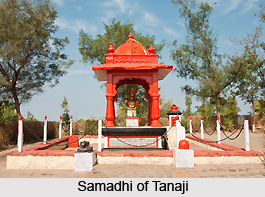 The city, over the centuries, has been captured and re-captured, plundered and ransacked, and its rulers have time and again sought the safety of surrounding forts.
The city, over the centuries, has been captured and re-captured, plundered and ransacked, and its rulers have time and again sought the safety of surrounding forts.
Sinhagad Fort, Pune (26 km)
A 45-minute drive south of Pune, Sinhagad calls for a precipitous climb, unless one arrives with his or her own transport. If not anything else, one needs to come here to awe at the minimalism of the tomb of Tanaji, Shivaji`s favourite general. He breathed his last here in the year 1670 after a successful bidding to seize the fort.
Legend has it that Tanaji and his men climbed the undefended almost-perpendicular face of the hill. He is alleged to have hurtled a ghorpad - a local lizard species, tied to a fat, long rope. The ghorpad, called Yashwanti, is believed to have grounded itself on a fissure in the rock face with lastingness enough for 300 troops to climb the fort.
Karle, Pune (50 km)
Near Lonavla, at Karle, a 1 hr drive from Pune, are Bhaja and Bedsa, the monastic settlements dating back approximately 2000 years. Each of them has a striking chaitya hall (prayer hall) and numerous viharas or cells for the monks to study and rest.
Bhaja is more well-preserved and the more tranquil of the two. The chaitya hall here sports timber beams and pillars housing a stupa. Puzzlingly, Cave 14 has a Hindu shrine. Even more bafflingly, Cave 19 has two sculpted panels devoted to the Vedic gods Surya and Indra. The viharas are dazzling in their minimality; they possess stone beds with small storage alcoves. While coming down from Bhaja, one can look for a private property with a few decrepit buildings, once the printing press of artist Raja Ravi Varma.
The Karle complex is sophisticated in its plan. The chaitya hall has an enormous rock-cut courtyard and three entryways. The hall itself has two rows of columns, each column concluding in carved elephants. A gigantic stupa is the focal point of the hall. Here, as in Bhaja, the timber beams still survive. A popular temple has sprung up outside. It is consecrated to Ekvira Devi, a Koli goddess. Taxi rides are available to journey to and fro. Alternatively one can take any local train heading for Lonavla. One must alight at Malvali railway station and hire an auto to Karle. Prices are negotiable, so it is better to do so for the tour in advance.



















